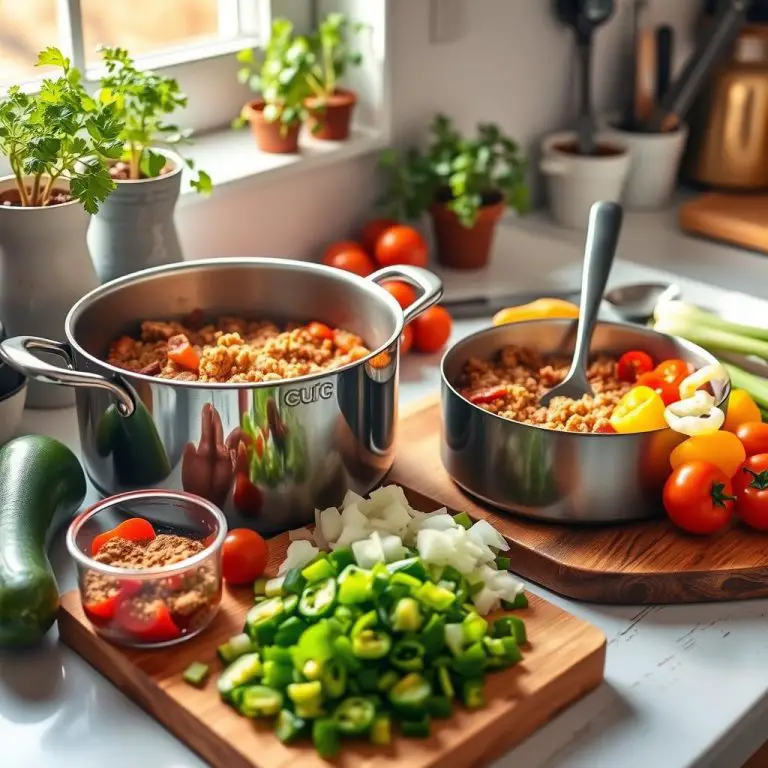How to Easily Tell if a Jalapeno Will Be Spicy

Fact Checked and Reviewed By:
A K M Rabiour Rahman Raju
BSc Ag Honors in Agriculture
Master's in Food Safety & Security
Bangladesh Agricultural University

The scoville scale is a key tool for measuring jalapeno heat levels. But, what makes a jalapeno pepper spicy? Can you guess if a jalapeno will be spicy just by looking at it? Knowing about jalapeno heat levels is important for those who enjoy spicy food. It can turn a meal from good to great, or from great to bad.

Knowing how spicy a jalapeno will be is not just about taste. It’s also about understanding what makes jalapenos hot. From the scoville scale to other factors, there’s a lot to learn. In this article, we’ll explore jalapeno spiciness and how to measure heat levels. This will help you become an expert at choosing and preparing jalapenos.
Understanding Jalapeño Heat Levels
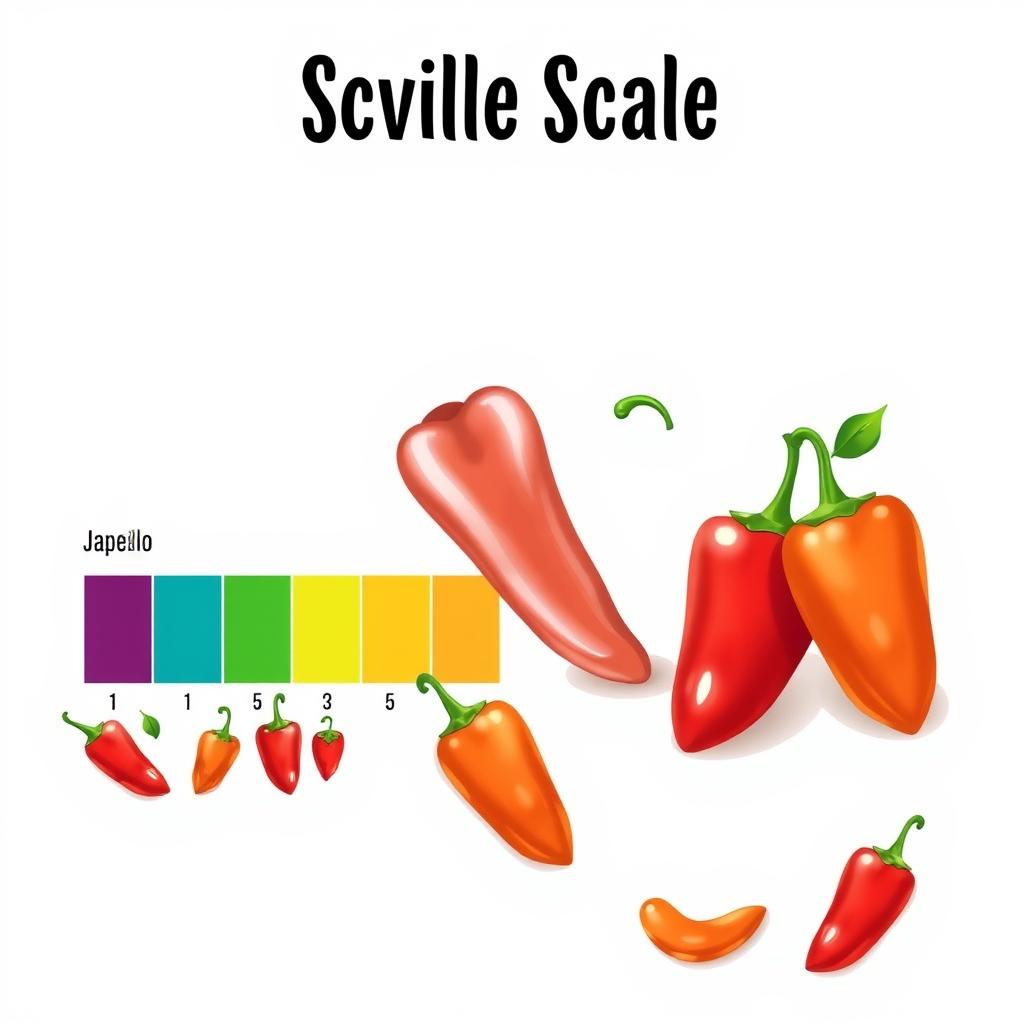
Jalapeños are known for their unique heat, which can change from pepper to pepper. To grasp this variation, we need to look at the scoville scale. This scale measures a pepper’s heat by its capsaicin content, the compound that makes it hot.
The heat of a jalapeno usually falls between 2,500 and 8,000 scoville heat units (SHU). But, several things can change this range. For example, climate, soil, and genetics play a role. Jalapeños grown in hotter climates are often spicier than those in cooler ones.
The Scoville Scale Explained
The scoville scale is based on human taste tests. It’s the most common way to measure pepper heat. The scale goes from 0 SHU, for sweet peppers, to over 2 million SHU, for the hottest peppers.
Normal Heat Range for Jalapeños
The usual heat range for jalapeños is 2,500 to 8,000 SHU. This can change based on the pepper’s ripeness, how it’s prepared, and how spicy you find it. Also, ripe red jalapeños are often milder than green, unripe ones.
Factors Affecting Spiciness
Several things can change how spicy a jalapeno is, including:
- Climate: Jalapeños grown in hotter climates tend to be spicier than those grown in cooler climates.
- Soil: The type of soil and its nutrient content can impact the pepper’s heat level.
- Genetics: Different jalapeño varieties can have distinct heat levels due to their genetic makeup.
Visual Indicators of a Spicy Jalapeño
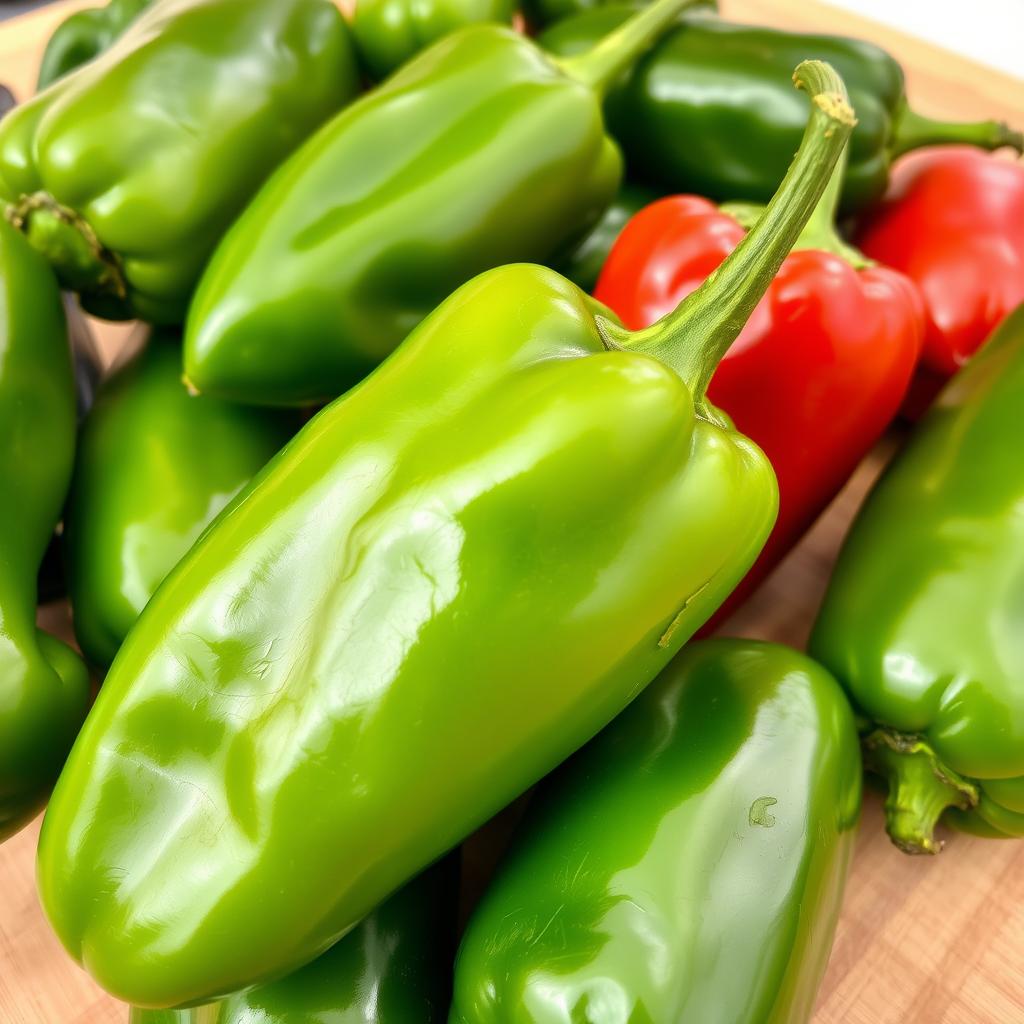
Looking at a jalapeno can tell you a lot about its heat. The color and texture of a jalapeno can hint at its spiciness. For example, a bright green, glossy jalapeno might be milder than a mature, wrinkled one.
Spicier jalapenos often have a darker green or reddish hue. This is because they are riper and have more capsaicin. Capsaicin is what makes peppers hot. Also, jalapenos with striations or an irregular shape are usually spicier than smooth ones.
Here are some key factors to consider when evaluating the jalapeno appearance:
- Color: A darker green or reddish color may indicate a spicier pepper
- Texture: A glossy texture may indicate a less spicy pepper, while a more wrinkled appearance may indicate a spicier one
- Shape: Irregularly shaped jalapenos may be spicier than smoother ones
By looking at these signs, you can pick the right jalapeno for your taste. These indicators aren’t always right, but they give a good guess. They help you choose the perfect jalapeno for your dish.
The Science Behind Jalapeño Heat
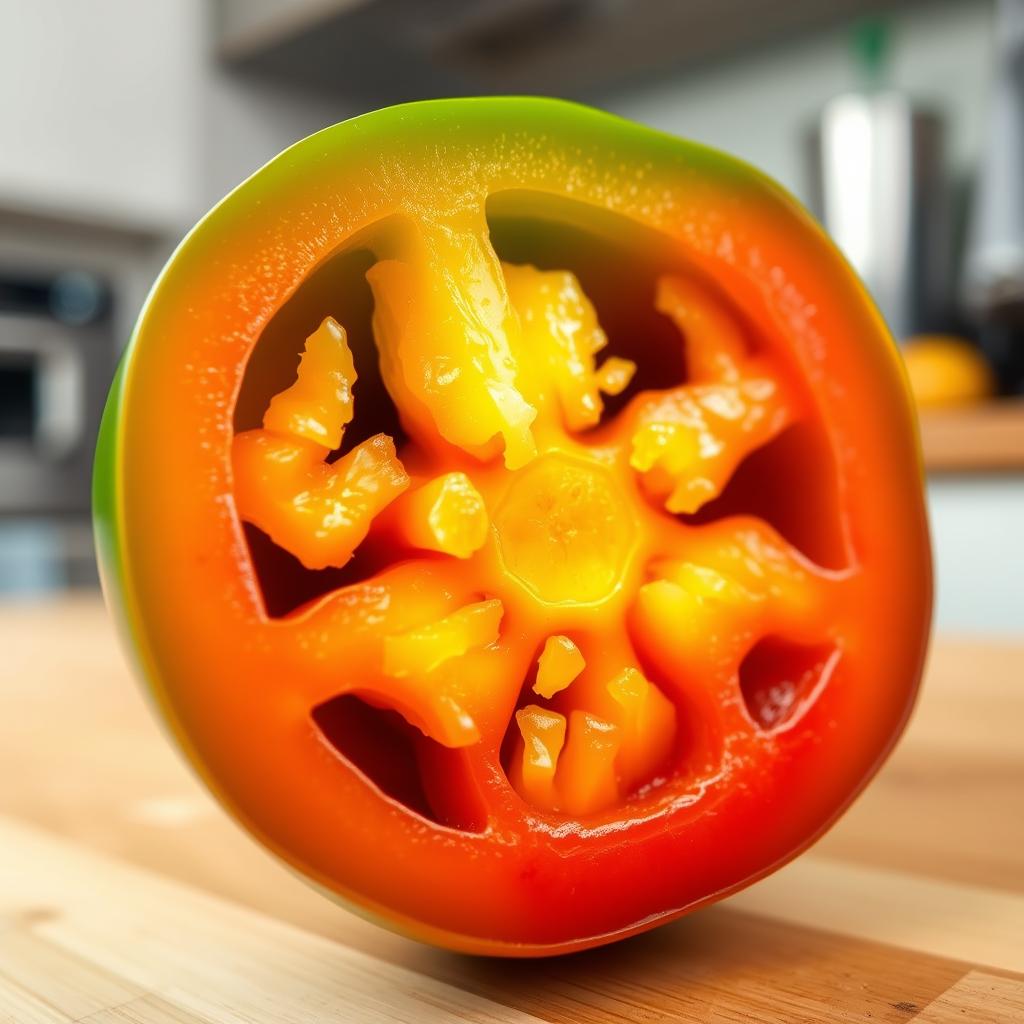
Jalapeños get their heat from capsaicin, a key part of plant chemistry. This compound makes the pepper spicy. Knowing how capsaicin works in jalapeños helps us understand their intense flavor.
The way heat spreads in the pepper is interesting. Capsaicin is made in the pepper’s white, spongy part. This area connects the seeds to the rest of the pepper. The heat isn’t spread out evenly, making some parts hotter than others.
Exploring plant chemistry and heat distribution reveals why some jalapeños are hotter. Things like the pepper’s ripeness and where it grew affect its heat. Learning about these factors helps us enjoy jalapeños more, choosing the right heat for our taste.
Key factors influencing jalapeño heat include:
- Capsaicin content: The amount of capsaicin present in the pepper.
- Plant chemistry: The biochemical processes that produce capsaicin and other compounds contributing to the pepper’s flavor and heat.
- Heat distribution: How capsaicin is distributed throughout the pepper, affecting the overall heat level experienced when consuming it.
How to Easily Tell if a Jalapeno Will Be Spicy Before Buying
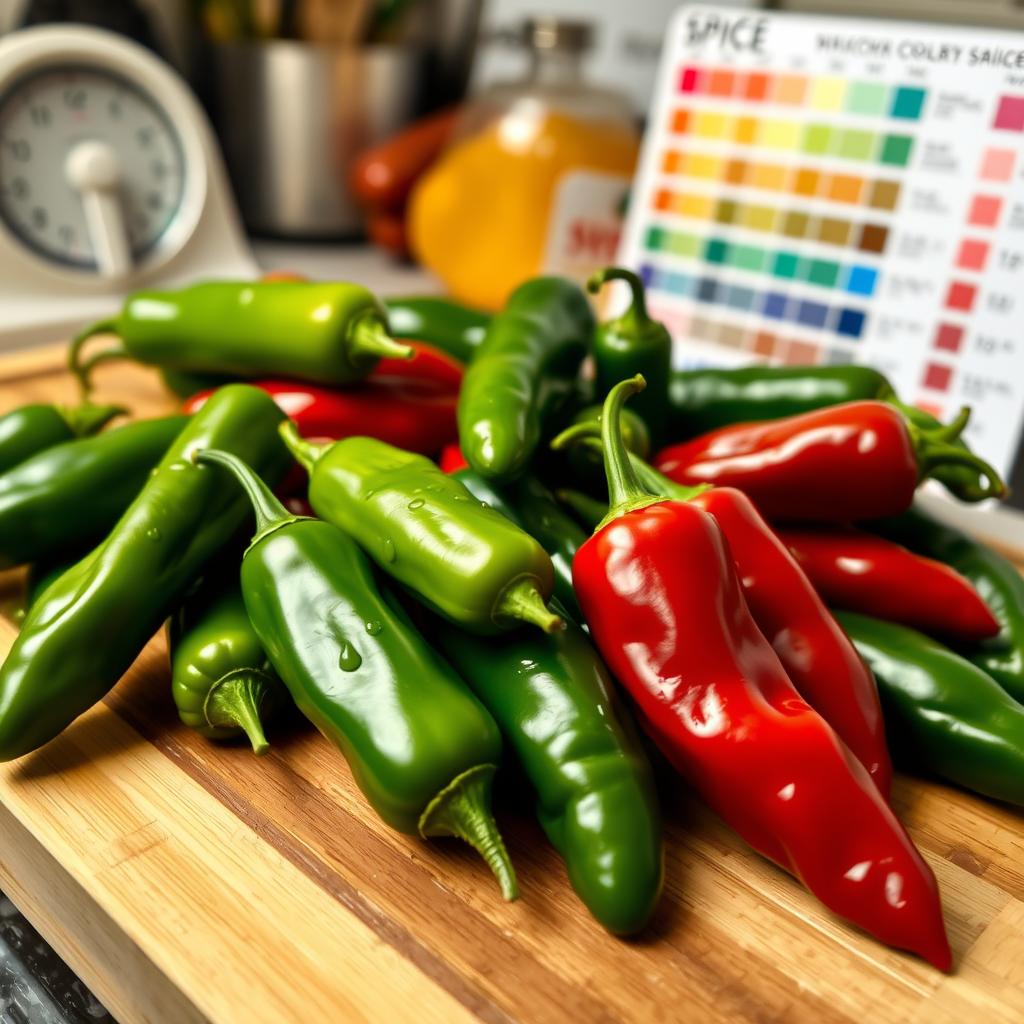
To figure out if a jalapeno is spicy before you buy it, there are a few easy ways. You can do a jalapeno spiciness test by gently squeezing the pepper. This releases its oils, and you can smell it. If it smells strong and makes your nose feel irritated, it’s probably spicy.
Another way is to look at the jalapeno’s color, shape, and size. These can tell you a lot about its heat level.
Here are some tips to help you choose the right jalapenos:
- Go for peppers that are a bright green color. They are usually spicier than those that are less vibrant.
- Choose jalapenos that look shiny. They are more likely to be hot because they have more capsaicin.
- Stay away from peppers that look old. Signs like wrinkles or soft spots mean they might not be as spicy.
By using these tips, you can pick jalapenos that match your spice level. Always be careful when handling jalapenos. The oils in them can irritate your skin and cause burning.
| Method | Description |
|---|---|
| Jalapeno Spiciness Test | Squeeze the pepper gently to release its oils and smell it |
| Jalapeno Heat Level Indicator | Look for the pepper’s color, shape, and size to determine its heat level |
Growing Conditions That Affect Heat Levels
Jalapeno peppers are very sensitive to their growing conditions. These conditions can greatly change how spicy they are. The climate, soil, and how much water they get all matter a lot.
Several factors contribute to the heat levels of jalapenos, including:
- Climate impact: The temperature and humidity of the environment can affect the production of capsaicin, the compound responsible for the heat in jalapenos.
- Soil conditions: The type of soil and its nutrient content can influence the growth and development of the pepper plants, which in turn affects their heat levels.
- Watering effects: The amount and frequency of watering can impact the stress levels of the plants, which can also affect their heat production.
Knowing these factors helps growers make their jalapeno plants as spicy as they want. By managing the climate, soil, and water, growers can get jalapenos just right.
Jalapeno lovers can learn what makes their peppers spicy. They can then grow them to get the perfect mix of flavor and heat.
| Factor | Description |
|---|---|
| Climate Impact | Affects capsaicin production and heat levels |
| Soil Conditions | Influences plant growth and development |
| Watering Effects | Impacts plant stress and heat production |
Testing Methods for Jalapeño Spiciness
To find out how spicy jalapenos are, different tests are used. The scoville scale testing is one of them. It checks how much capsaicin is in a pepper. Capsaicin is what makes peppers hot.
Another way to test heat is with high-performance liquid chromatography (HPLC). This method breaks down a pepper to see how hot it is. It’s very accurate for checking capsaicin levels.
Here are some ways to test jalapeno spiciness:
- Scoville scale testing: measures the amount of capsaicin present in a pepper
- High-performance liquid chromatography (HPLC): separates, identifies, and quantifies each component in a mixture
- Sensory testing: involves tasting and evaluating the heat level of a pepper
These tests are key in the food industry. They help make sure jalapenos are the right heat. This is important for keeping customers happy and coming back.
Common Myths About Jalapeño Heat Levels
Many people think that a jalapeno’s size and color show how hot it is. But, this isn’t always true. The heat of a jalapeno comes from capsaicin, which can change a lot. It doesn’t matter how big or what color the pepper is.
Some folks believe bigger jalapenos are milder, and smaller ones are hotter. But, it’s not that simple. The pepper’s genetics, how it grows, and when it’s ripe are what really matter. The color of a jalapeno doesn’t always show how hot it is. Even if a jalapeno turns red, it doesn’t mean it’s hotter than a green one.
Debunking Size Misconceptions
- Jalapeno size does not determine heat level
- Smaller peppers can be just as hot as larger ones
- Genetics and growing conditions play a bigger role in determining heat level
Color Myths
Another myth is that a jalapeno’s color shows its heat. While some jalapenos turn red as they ripen, this doesn’t mean they’re hotter. The color of a jalapeno comes from sunlight and genetics, not heat.
Storing and Handling Spicy Jalapeños
To keep your jalapeños fresh and spicy, proper storage is key. Store them in a cool, dry spot, away from sunlight. Use an airtight container or plastic bag to keep them fresh.
Handling jalapeños requires care to avoid skin and eye irritation. Wear gloves to prevent capsaicin from touching your skin. Always wash your hands well after touching jalapeños.
Here are some tips for storing and handling spicy jalapeños:
- Store jalapeños in an airtight container to maintain their freshness
- Keep jalapeños away from direct sunlight to prevent spoilage
- Wear gloves when handling jalapeños to prevent skin irritation
- Wash your hands thoroughly after handling jalapeños
By following these tips, you can enjoy your spicy jalapeños longer. They will stay fresh and spicy. Proper storage and handling are crucial for jalapeño lovers.
Conclusion: Mastering Jalapeño Selection for Perfect Heat Levels
In this guide, we’ve delved into the world of jalapeño heat levels. We’ve given you key insights to pick the perfect peppers for your cooking. Now, you know how to choose jalapeños that match your desired heat.
Choosing the right jalapeños is all about paying attention to details. Look at the size, color, and stem to guess the pepper’s spiciness. Learn to debunk common myths and keep your peppers fresh to enjoy their full flavor.
With this knowledge, you can make your dishes just right with jalapeño heat. Your meals will be perfect for you and your guests. Start mastering jalapeño selection and explore a world of flavors where every bite is just right.
FAQ
What is the Scoville scale and how does it measure jalapeno heat levels?
The Scoville scale is used to measure how spicy peppers are. It looks at the capsaicin in peppers. This shows how spicy they are, with a Scoville Heat Unit (SHU) value.
What is the normal heat range for jalapeno peppers?
Jalapeno peppers usually have a heat level of 2,500 to 8,000 SHU. This makes them moderately spicy. The exact heat can vary based on growing conditions.
What factors can affect the spiciness of a jalapeno pepper?
Several things can change how spicy a jalapeno is. Climate, soil, genetics, and pepper age all play a part. For example, more sunlight and dry soil can make peppers spicier.
What are some visual indicators that a jalapeno will be spicy?
Darker green, thinner-skinned jalapenos with a pointed tip are often spicier. But, these signs aren’t always right. The only sure way to know is to test the pepper’s spiciness.
How can I test a jalapeno’s spiciness before buying?
You can use the squeeze test or sniff test to guess a jalapeno’s heat. These methods give a rough idea. But, the only sure way is through Scoville scale testing.
What growing conditions can affect the heat levels of jalapeno peppers?
Climate, soil, and watering affect jalapeno heat. Hotter, drier places and poor soil can make peppers spicier. Water stress also increases capsaicin production.
What are some common myths about jalapeno heat levels?
Some myths say bigger jalapenos are hotter, red ones are spicier, and older ones are more pungent. But, these aren’t true. The only way to know is through Scoville scale testing.






